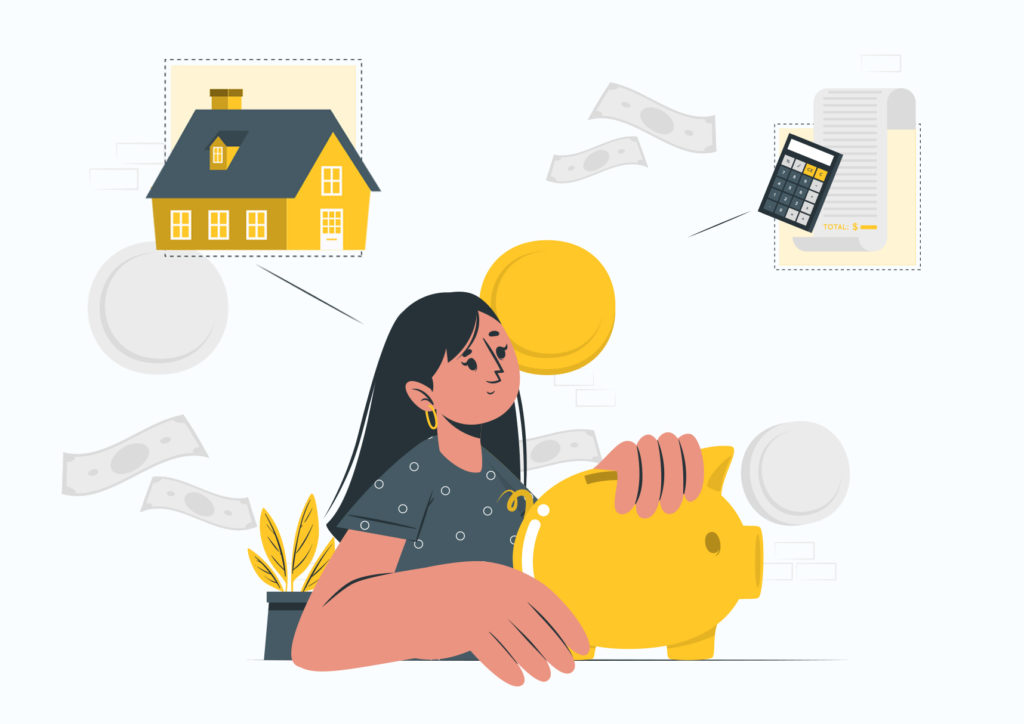What is Good Capital Growth [Expet Insight]
![What is Good Capital Growth [Expet Insight]](https://aspenwoolf.co.uk/wp-content/uploads/2022/05/1.What-is-Good-Capital-Growth_.jpg)
Everyone getting into property investment is wondering what is a good capital growth? Alongside rental yields, capital growth is the main way that property investors can make returns on their investment.
In this article, we take a look at the most important aspects of capital growth to understand how to maximise investment opportunities, what to look for when considering a capital growth-led investment, the difference between rental yield and capital growth and where you can find good capital growth property investments in the UK property market.
Defining Capital Growth
Capital growth is the profit made on a property investment, i.e. the increase in its market value from the cost that was paid for the property. In other words, the difference between the purchase price and what the property could be sold for at a later date.
Also known as capital appreciation, usually, a property investment will increase in value over time. Capital-gains-focused investors tend to have a longer-term buy-and-hold strategy to maximise the amount of profit they make before selling their property.
However, that’s not the only option. Property investors can also make a profit through rental income. By renting out a property, investors can generate a steady income stream from the rent paid by tenants. This type of strategy is called yield-focused investing and usually requires more frequent management of the property.
It is an essential indicator for investors looking to understand the potential long-term benefits of their investment choices. Below is a deeper exploration of capital growth, how it differs from income generation, and examples of assets known for their capital growth potential.
Explanation of Capital Growth in the Context of Investments
Capital growth is the increase in the market value of an investment compared to its original purchase price. It is realized when the asset is sold for more than its purchase price, thus generating a profit for the investor.
Capital growth is typically expressed as a percentage increase over the initial investment cost. This allows investors to compare the performance of different investments over time.
Difference Between Capital Growth and Income Generation
- Capital Growth: Focuses on the appreciation of the asset’s value over time. It’s a long-term strategy, often associated with higher risk and higher reward. Capital growth investments are usually sold at a future date for a profit.
- Income Generation: Refers to the earnings from an investment, such as dividends from stocks or rental income from real estate. These earnings are received regularly while the investor holds the asset, providing a steady stream of income.
Examples of Assets That Typically Offer Potential for Capital Growth
- Stocks: Shares in companies can increase in value if the company grows or becomes more profitable. The stock market, while volatile, has historically provided significant capital growth opportunities over the long term.
- Real Estate: Property values can increase over time due to factors like demand growth, improvements, and developments in the area. Real estate is a popular choice for those seeking capital growth, albeit with considerations like maintenance costs and market fluctuations.
- Mutual Funds and ETFs: Investing in a diversified portfolio of stocks, bonds, or other assets, mutual funds, and ETFs (Exchange-Traded Funds) offer the potential for capital growth. These funds are managed by professionals who aim to increase the fund’s value over time.
- Cryptocurrencies and Tech Startups: For the more risk-tolerant investor, emerging sectors like technology and digital currencies offer potential for significant capital growth. However, these investments come with a higher risk of volatility and loss.

Measuring Capital Growth
Measuring capital growth is crucial for investors aiming to assess the performance of their assets and make informed decisions about future investments. Understanding the key metrics, the role of compounding, and the use of historical data can provide a comprehensive view of an investment’s growth potential. Here’s how to calculate and evaluate capital growth effectively.
Key Metrics and Formulas Used to Calculate Capital Growth
- Percentage Increase in Asset Value: The most direct way to measure capital growth is by calculating the percentage increase in the value of an asset over time. The formula for this calculation is:
This formula provides the growth rate as a percentage, allowing for easy comparison across different investments.
- Annualized Return: For investments held over multiple years, the annualized return gives a sense of the average yearly growth rate. It can be calculated using the formula:
This metric is particularly useful for comparing the performance of investments over different time periods.
The Role of Compounding in Enhancing Capital Growth Over Time
- Compounding Effect: Compounding occurs when the earnings from an asset are reinvested to generate additional earnings over time. This effect can significantly enhance capital growth, especially for long-term investments.
- Impact on Returns: The power of compounding lies in its ability to accumulate wealth exponentially rather than linearly. Investments that offer the potential for reinvestment of returns (such as reinvested dividends in stocks) can benefit greatly from compounding.
Using Historical Data and Trends to Project Future Capital Growth
- Historical Performance: Analyzing the past performance of an investment or market can provide valuable insights into potential future growth. While past performance is not a guaranteed predictor of future results, it can indicate trends and patterns that may repeat.
- Market Trends: Understanding broader market trends and economic indicators can also inform projections of capital growth. Factors such as inflation rates, interest rates, and economic growth can impact the future value of investments.
- Adjusting for Risk: It’s important to adjust growth projections for the level of risk associated with the investment. Higher-risk investments may offer the potential for higher returns but can also lead to greater volatility and the possibility of loss.
What is Rental Yield?
Considering that many investors will purchase a property and rent it out while it appreciates in value, rental yield is another important factor when considering a buy-to-let-property investment.
Rental yield is the income you earn on a property on an annual basis. It’s important to distinguish between gross and net rental yield to assess the viability of an investment.
Net rental yield is calculated by subtracting expenses from the annual rental income, then dividing by the total cost of the property before multiplying the result by 100 to get the net rental yield percentage.
The net yield calculation does involve a few extra steps so to make it a bit easier here’s the breakdown:
- Tally up all the costs and expenditures associated with owning the property.
- Sum up the yearly rental income you will receive from the property.
- Deduct the total expenses from the annual rent.
- Divide the number by the value of the property.
- Multiply the result by 100.
When buying a rental property, getting good rental yields is of paramount importance to investors. Ideally, any property investment should be sustainable. Landlords should ensure that a property can pay for itself to cover expenses like:
- mortgage repayments,
- rental income tax,
- property maintenance
- and other costs associated with owning a property.
When you do take these expenses into account, you can establish a realistic rental yield and determine if the property is a viable investment for you as a property investor.
Is Good Capital Growth More Important than Rental Yield?
No two property investors are alike and each is looking for something different from their investment. Most property investors state that both capital growth and rental yield are important. And taking both into consideration before purchasing an investment property is essential for most.
Of course, achieving both is not impossible, but it does require far more research and preparation before investing. Additionally, having a mix of properties and using different investment strategies might help balance out any potential losses in the case of any unexpected changes in the market.
Understanding the capital growth prospects of a property can give you an idea of how long you might plan to hold onto a property before selling it. For some investors, getting a lump sum return may fall into their plans for retirement or savings, while rental yields may be important for those looking to gain monthly passive income (find more details on where to invest money to get monthly income in this post).
With careful planning and research, you can make an informed decision about your investment and the type of financial returns you might get from it.

What is a Good Capital Growth in Property Investment Benchmarking
While there’s no one-size-fits-all answer, a general annual capital growth rate of 3% to 8% is considered favorable for property investments in many markets. However, exceptional areas with high demand and limited supply, or those benefiting from significant infrastructure projects, can experience double-digit growth rates over certain periods.
Key Considerations
- Location: Prime locations or up-and-coming areas with planned infrastructure developments can offer higher capital growth potential.
- Market Timing: Buying property during a downturn and selling in a boom can maximize capital growth, though timing the market is challenging and requires insight and sometimes luck.
- Property Type: Different types of properties (e.g., residential, commercial, industrial) may experience varying growth rates due to different demand and supply dynamics.
- Economic Factors: Interest rates, employment rates, and economic policies can significantly impact property values and, consequently, capital growth.
- Inflation: Ideally, property capital growth should outpace inflation to ensure the real value of the investment increases over time.
Measuring Against Inflation
A key measure of good capital growth is its comparison against inflation rates. If a property’s value grows at a rate that exceeds inflation, the investor gains real purchasing power. In many developed countries, exceeding the average inflation rate (typically 2-3%) is a minimal target for considering an investment worthwhile.
Long-term Perspective
Real estate is generally considered a long-term investment, and capital growth can be more pronounced over extended periods. Short-term fluctuations are common, but the historical trend for well-located properties is upward growth. Investors often benefit from holding properties for several years to capitalize on compounding growth and market cycles.
How to Find Good Capital Growth
Early in your process of finding an investment property, there are several things you should keep in mind that can help you to maximise capital growth potential.
Location
Location is one of the prime considerations for property investors and will have a huge impact on the capital growth you may achieve. Investors should look at property prices within the local area to see a property’s value and compare it to others close by to see what features can maximise its value. Be sure to research the past and current performance of properties in the area which can give you insight into how a property might perform.
Growing Population
Real estate tends to appreciate in value where there is a growing population. As the population rises, demand for property increases and available properties become scarcer, pushing up both rental and property prices. For good capital growth, look for areas and cities where the population is set to increase in the coming years.
Amenities
Areas with good transport links, shops and restaurants and supermarkets as well as good schools increase the likelihood that your property will see positive capital growth. Good amenities will also make the area attractive to rental tenants if you plan to rent it out in the meantime.
Property Type
Since the pandemic, houses with large gardens and extra rooms that can be converted into an at-home office are in high demand. Buyers are reconsidering the quality of life a property offers. Now, they’re looking for specific features that can increase their quality of life.
Off-Plan Properties
Purchasing an off-plan property can be one of the best ways to boost your capital growth prospects. When it comes to off-plan, investors can often secure a good deal on a property. Usually under the market rate, sometimes securing a discount of between 20 – 50%. Many developers will be willing to drop the price of a property. Particularly at the start of a development or when they need to sell units to fund the next phase of the property development.
The only downside to off-plan is that the investor will need to wait until the property is completed in order to make money from the property, but taking a long-term view of returns can be lucrative.
Which areas of the UK Have the Strongest Capital Growth Projections?
Leeds
Leeds is one of the UK’s most in-demand property markets. According to Zoopla’s UK House Price Index Report, in 2021, homeowners in Leeds earned £11,500 in profit thanks to rising house prices. The average price of a house in Leeds now stands at £187,500. Up from £176,056 in 2020 and house prices are expected to continue to rise at an above-average rate in 2022.
Sky Gardens is one of the best investment properties on the market in Leeds. The 32-story luxury skyscraper is set in the heart of the city’s £350m Southbank Project. This is a perfect location to capitalise on Leeds’ phenomenal growth and appeal.
Liverpool
Liverpool is another city tipped to experience good capital growth in the coming years. According to Savills, the average house price will probably rise by an astronomical 28.8% by 2025! Which is the highest in the UK and double that of London.
Units in Alexandra Tower in the city centre are currently available at 10% below market rate. Completed and tenant ready, investors have the opportunity to make immediate rental income! Not to mention, take advantage of the strong capital gains that you could make in years to come.
Manchester
The Northern city of Manchester offers attractive capital gains prospects. The average property price in Manchester currently sits at £231,000. In the last year alone, the average price of a property increased by over £13,000.
A growing population means that the city centre population should surpass 100,000 by 2025. Which means adding 5,000 people per year. House prices in Manchester are expected to grow by around 18%. Meaning in the right property and area of the city, investors can expect good capital growth on their property.
Bridgewater Wharf is close to the city centre and with a waterfront location and due to demand is set to benefit From 6% NET project returns.
When it comes to good capital growth, the benchmarks for what is considered “good” will vary. Namely according to each individuals property investor and their aims. Generally speaking, areas undergoing regeneration with growing populations tend to indicate rising house prices. Investors can maximise their returns by focusing on properties with in-demand features. Like outside space and extra bedrooms, and by going off-plan there are potentially huge capital gains you could make.
Strategies for Achieving Good Capital Growth
Capital growth is a critical goal for many investors, aiming to increase the value of their investments over time. Achieving significant capital growth requires a strategic approach, incorporating diversification, patience, and sometimes a choice between active and passive investment strategies. Additionally, the reinvestment of returns can play a crucial role in accelerating growth. Here’s how investors can strategize to achieve good capital growth:
Diversification to Spread Risk
- Principle: Diversification involves spreading your investment across different asset classes (such as stocks, bonds, real estate, and commodities) or within asset classes (such as different sectors or regions) to reduce risk. The rationale is that not all investments will perform poorly at the same time.
- Benefit for Capital Growth: By diversifying, you protect your portfolio from significant losses tied to any single investment, allowing for steadier capital growth over time. This strategy can help mitigate the impact of volatility and market downturns on your investment’s growth potential.
Long-term Investment Horizon
- Power of Compounding: Compounding is the process where an asset’s earnings, from either capital gains or interest, are reinvested to generate additional earnings over time. This effect can significantly enhance capital growth, especially for long-term investments.
- Long-term Perspective: Adopting a long-term investment horizon allows you to ride out the volatility of markets and benefit from the compounding effect. Historically, markets have trended upwards over the long term, rewarding patient investors with substantial capital growth.
Active Versus Passive Investment Strategies
- Active Investment: Active investment strategies involve regularly buying and selling assets to exploit profitable conditions in the market. This approach requires time, knowledge, and often higher fees, but can potentially lead to higher returns.
- Passive Investment: Passive strategies, such as investing in index funds or ETFs, aim to mirror the performance of a market index. These strategies involve less trading, typically incur lower costs, and have historically provided solid returns over the long term.
- Impact on Capital Growth: The choice between active and passive strategies can affect your capital growth. While active strategies offer the potential for higher returns, they also come with higher risks and costs. Passive strategies may provide a more steady path to capital growth, benefiting from market trends and the compounding effect with lower fees.
Role of Reinvestment of Returns
- Reinvestment Strategy: Reinvesting dividends or interest earned from your investments can significantly impact your portfolio’s growth. Instead of taking these earnings out, using them to purchase more of the investment can accelerate the compounding effect.
- Exponential Growth: Over time, reinvestment contributes to exponential growth of your capital, as the returns themselves generate further returns. This strategy is particularly effective in accounts where taxes on gains can be deferred or are not immediately applicable, allowing for uninterrupted compounding.
What is a Good Capital Growth FAQs
What is a good capital growth rate?
Capital growth rate will largely depend on the type of asset and the market conditions. In the UK property market a good capital growth rate should give a return of around 4%. Anything that surpasses 4% is already an exceptional growth rate.
How do you identify a high growth suburb?
Gentrification, ongoing regeneration, a growing population and demand for housing outpacing supply all indicate one thing. That a suburb could offer good capital growth projections. Investors should look at a few telling signs. Such as property price growth in recent times, the current value of other properties in the local area as well as property price growth projections.
If you’d like more info on this topic, head over to our “5 Ways To Spot Up-And-Coming Areas” article to learn more.

